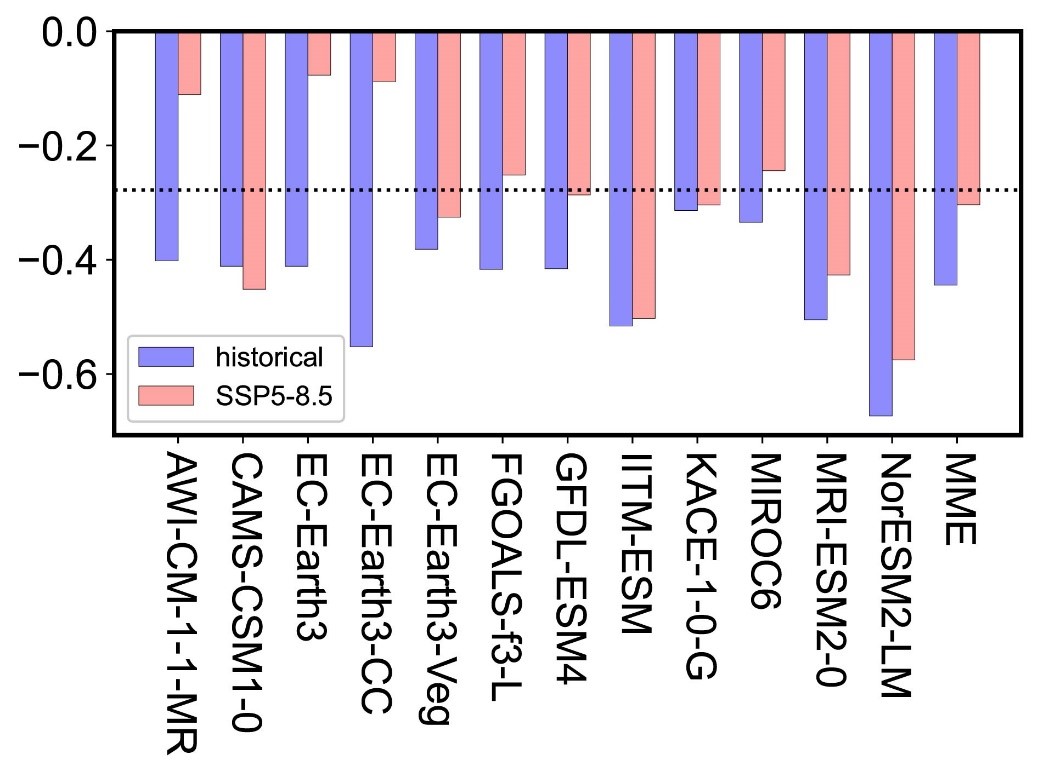The Asian–Pacific Oscillation (APO), a dominant mode of atmospheric variability characterized by a seesaw variation in the upper-tropospheric temperature between Asia and the North Pacific, plays important roles in the atmospheric circulation and climate of East Asia. A recent study using state-of-the-art climate models projected a weakening of the winter APO in the expected warmer world of the second half of the 21st century. However, the nature of its relationship with the atmospheric circulation and climate of East Asia in the future remains unknown.
This issue has recently been addressed in a paper by Qiwei Fan and Botao Zhou of Nanjing University of Information Science and Technology, published in the journal Atmospheric and Oceanic Science Letters.
The results presented in the paper showed that observations indicate that a significant out-of-phase relationship exists between the APO and precipitation over southern China in winter. It was then found that 12 state-of-the-art climate models can reproduce this relationship, and the ensemble of these models can capture the APO-related anomalies in the atmospheric circulation and climate of East Asia. What this showed is that, when the winter APO is in a positive phase, the East Asian westerly jet shifts northwards, accompanied by anomalous descending motion and water vapor flux divergence over southern China. These atmospheric circulation anomalies are unfavorable for the occurrence of precipitation in southern China.
The model ensemble was then used to examine the relationship between the APO and precipitation over southern China in winter under the future scenario of high greenhouse gas emissions (known as SSP5-8.5). The projection revealed a weakening in their relationship during the second half of the 21st century under the SSP5-8.5 scenario, as compared to the present day. Such a weakening may result from a weaker link between precipitation over southern China and the meridional displacement of the East Asian jet. These results are encouraging for understanding atmospheric signals and climate regimes over the Asian–Pacific sector in the context of global warming.
“This finding reflects a possible estimate from state-of-the-art climate models. However, there are some uncertainties due to differences in the emission scenarios and the models themselves. We intend to carry out further studies to reduce these uncertainties in the future,” says Prof. Zhou, the corresponding author of the study.

Correlation between the APO and southern China precipitation in winter during 1965–2014 (blue) and 2050–2099 (pink) for individual models and the multi-model ensemble mean (MME). The dotted line delineates the correlations significant at the 0.05 level.
Citation:
Qiwei Fan, Botao Zhou, 2023. Linkage between the Asian-Pacific Oscillation and winter precipitation over southern China: CMIP6 simulation and projection, Atmospheric and Oceanic Science Letters, 100401, https://doi.org/10.1016/j.aosl.2023.100401.
|